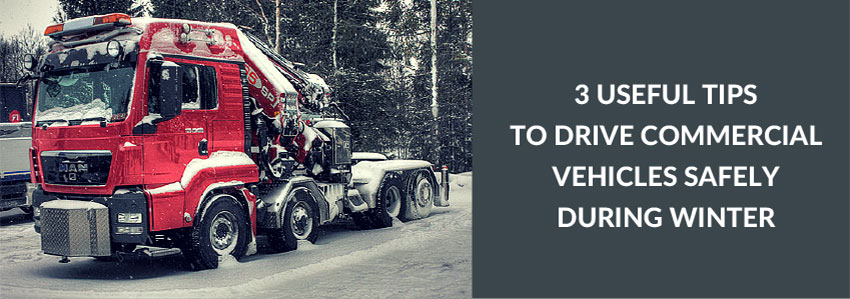3 useful tips to drive commercial vehicles safely during winter
 3 useful tips to drive commercial vehicles safely during winter
3 useful tips to drive commercial vehicles safely during winter
The cold season is one of the most challenging seasons in terms of traffic conditions. Negative temperatures, precipitations like snow, drizzle or sleet can throw off traffic charts. For an owner of commercial vehicles fleets, complying with these charts is becoming increasingly difficult so it proves useful to prepare drivers for less pleasant road conditions which are winter-specific.
To get through the cold season, see below 3 tips that the Star Lubricants team believes to be useful when trying to make driving during winter less difficult.
1. Prepare your fleet for the cold season
Commercial vehicles are prone to increased wear during winter especially because of negative temperatures. Starting the engine at negative temperatures or heavy precipitations could affect their performance and damages may occur that no commercial vehicles fleet owner would want. Especially given that any damaged vehicle leads to significant losses and increased maintenance costs.
In this regard, before the cold season, make sure that the entire commercial vehicles fleet is subject to a thorough check that includes actions such as:
- Check of the radiator and battery status
- Provision of winter tyres
- Check of the engine oil level and its change, if necessary
Also, make sure that every vehicle going on the road is equipped with the utensils necessary during the cold season: liquids for defrosting the windshield and the locks, a small shovel, a bag of sand and tire chains.
2. Encourage staff to drive cautiously
Often, drivers are endangering themselves and the other road users because of their desire to meet certain working timetables. However, their safety should be a priority for you, so it would be a good idea to organize a training session before winter where they can discuss in detail how they can drive cautiously during bad weather.
It is very important that your employees know how to use the brake and how to drive at a lower speed on road portions covered in ice or snow. Some techniques that can help drivers to drive cautiously and safely during winter can also be found here.
Also, drivers should not force the vehicle and when they feel they are not 100% sure that they can handle the situation of the road, they should stop at the first car park until the traffic conditions allow a safe movement.
3. Monitor the weather
The National Administration of Meteorology should be your ally during this period. Pay attention to weather warnings issued by it and warn the drivers en route about potential weather phenomena which may disturb their movement.
Moreover, where appropriate, adjust the working timetables so your drivers would not have to drive at high speeds and risk, therefore, to be involved in undesirable traffic events.
Also, checking the status of national roads and highways can help you manage more easily the movement of your commercial vehicles towards destinations imposed in the working timetable.
To get through the cold season without unpleasant events, implement the 3 tips above. You will protect the investment in your fleet, but also your employees, who will arrive safely at their destination every time regardless of the road conditions.
Protect your fleet of commercial vehicles from negative temperatures with Mobil Delvac 1
As mentioned above, negative temperatures may affect engine performance of commercial vehicles. The lubricants from the Mobil Delvac 1 range have stable properties and can provide the protection you need even when driving in an environment with negative temperatures.
Click on the image below and contact a Star Lubricants agent who can help you choose a lubricant that meets the technical requirements of the manufacturers of the vehicles you own and that can protect commercial vehicles even during winter.







